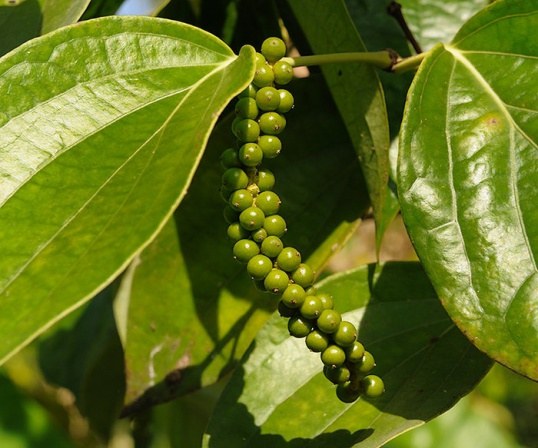Useful properties of allspice
Pepper has antibacterial properties, adds it to the products retains their freshness. Through pepper, the secretion of hydrochloric acid in the stomach increases, improving digestion. This seasoning protects from constipation, colic and diarrhea, helps people deal with excess weight because it breaks down the fat cells in the body. Peppers useful for skin diseases, and is a great antioxidant. It helps in the following diseases: hoarseness, hernia, pain in the ears, whooping cough, joint pain, gangrene, asthma and many others. From ancient times, pepper is used for medicinal purposes.
The cultivation of pepper
Pepper can be easily grown at home. You just buy in a grocery store pepper in the form of polka dots, then choose the largest specimens and soak them in warm water for a day. Plant seeds in pot, preferably in early summer, a month will appear the first shoots. After the second leaf, the pepper is necessary to fertilize with a solution of poultry manure (pre-defend a couple of days, so as not to burn plants). In the winter it is recommended to keep the pots of peppers on the windowsill, in the summer in a warm Sunny spot, preferably outdoors.
Pepper is a tropical heat-loving plant that does not like cold, freezing it instantly killed (if the temperature is below ten degrees, the plant dies). Black pepper grows well in the first year of life can grow to two meters. With proper care in the second year begins to bear fruit. The plant is hygrophilous, avoid overdrying. The adult plant is grown in a mixture of four parts of heavy sod land, two parts leaf soil, one part sand and one part humus.
For the contents of the pepper, you should choose a bright location that is protected from direct sunlight. Watering plants in summer, abundant, and moderate winters, using the pooled water at room temperature. Multiplies pepper cuttings, dividing the Bush, seeds, cuttings. Time of crop flowering usually occurs in April-may.
Prefers pepper stray light, therefore perfectly suited for its cultivation window on the East or West direction. During the active growing season, keep the temperature 20-25 C, in autumn and in winter 16-18 degrees. Needs pepper in the high humidity, it is necessary to consider this factor when planting plants. For this you can place the pot with the pepper on the tray, which is filled with moist peat or expanded clay. Feed the plant from spring until autumn complex mineral fertilizers once in two weeks (better to take fertilizer for decorative-deciduous plants).
Transplanted adult pepper once in two years – once a year, do it best in spring. Substrate for pepper suitable nutrients and loose. Pots better to use plastic in a clay pot is stronger than the substrate dries out. At the bottom of the pot should be good drainage. In the process of growing peppers, you may encounter difficulties. Due to lack of power and light plant is prone to exposure of stems and stretching. If tips of leaves blacken, it can be a sign of insufficient humidity of substrate and air. Yellowing of leaves is due to the waterlogged soil, lack of nutrients in the soil.
